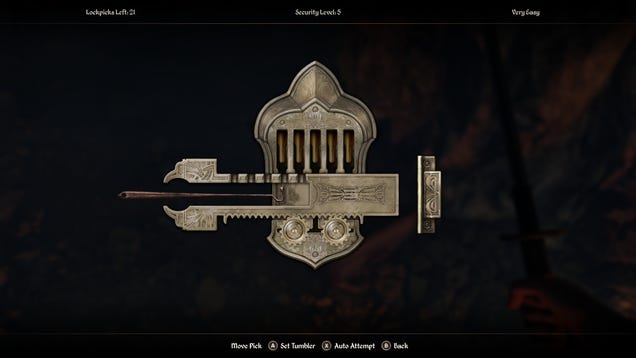
TCL QM7 Review
I’ve gotten used to making some kind of concession when it comes to a television under $1,000. Be it a weird stand, combining the eARC port with one of two 120Hz options, bad sound, a dirty panel, poor brightness, or weak HDR support, there has always been something that makes me say, “ah, that’s why it’s only $700.”
TCL has in recent years been outclassed by the very good Hisense options at the same price but makes a return to form with the QM7, eliminating any concessions and delivering a television that just flat-out performs better than the competition – Hisense included.
This is almost a flawless television at this price level, with my only caveat being pretty bad halo-ing when viewing the panel off-axis. That’s pretty much the lone complaint, though, and TCL has made an excellent television for gaming and multipurpose use yet again.
TCL QM7 (2024) – Design and Build
Pretty much all manufacturers are running with the same design aesthetic now, which means that unless you know where to look, you’ll be hard-pressed to find a visual difference between a Sony, Hisense, LG, or TCL television. From the front, the QM7 goes with a thin-bezel design and a center-placed stand. A small bar at the bottom that serves as the reader for the remote and the power light is the only difference in thickness across the entire face of the display.
For an LED television, the QM7 is remarkably thin and light. Usually, mini LED panels trade thin, featureless fronts for thicker, heavier backs, but somehow TCL eschewed this and delivered a television that’s easy to remove from the box and position in your living room.
On the upper third of the backside, the QM7 sports an Onkyo ultra-bass (which is part of a full Onkyo-branded 2.1 sound system) – an attempt by TCL to make the mids and lows a bit better than thin TVs can typically manage. More on that later, but it’s worth pointing out from a design perspective since it’s the first thing you’ll notice about the rear of the QM7; it’s hard to miss.
TCL placed the power input on the (from the front) left side of the TV and all of the other inputs on the right, which is the opposite of most other new TVs on the market. You’ll find two HDMI ports capable of supporting 4K at up to 144Hz and two more capable of 4K at up to 60Hs. Gratefully, TCL combined the eARC port with one of those lower-spec ports, so you will be able to use your soundbar with the QM7 without sacrificing one of the high-performance ports, meaning you can plug in both a gaming console and a PC (for example) at the same time. Sony, take notice.
You’ll also find a 3.5mm audio jack, two USB-A ports, a LAN port, an optical audio input, and composite video. The QM7 also supports WiFi 5 and Bluetooth 5.2.
Cable management is very good, as all cables can be routed around the back and into the large stand that has a solid cover to keep them all in place.
Speaking of the stand, it is relatively low profile but raises the QM7 up high enough that a short soundbar can comfortably fit below the display and not block the remote receiver unit. That sounds like something that should be standard, but many television manufacturers are forgetting this important detail. It should be noted that it’s not a ton of space, so taller soundbars are still not going to fit, but my Bose soundbar is short enough that it works.
TCL QM7 (2024) – The Remote
TCL’s remote is what I would call utilitarian, as it’s not a particularly pretty remote. It’s one of the few places where the QM7 shows its lower-price tier, in my opinion. It’s a rather large remote with rounded edges and sides, which does make it comfortable to hold. All of the buttons are easy to access.
The QM7 comes pre-loaded with six shortcut buttons and my review unit features Netflix, Prime Video, YouTube, TCL TV, Apple TV, and Pluto TV. The inclusion of TCL TV feels like an option that will be largely ignored along with the other TCL Home shortcut button that lives right above these six options, but the rest are largely useful. You can’t reprogram these, but TCL does give you a shortcut button that you can customize.
The only confusing thing about this remote is how many buttons there are that appear, at least at first glance, to do the same thing. You’ve got a home button and a TCL Home button, and a settings button and both an info and hamburger button, for example. They do different things, but they look so similar that you’ll have to spend time with the remote to figure it all out.
TCL QM7 (2024) – Software and UI
TCL, like Hisense and Sony, uses a slightly modified version of Google TV as the operating system of this television. TCL leaves it largely unchanged except for the addition of the TCL Home tab at the top, but you can ignore it rather easily.
While the QM7’s price may put it in the “mid-tier” or even “budget” segments, TCL didn’t skimp on the processing power as button presses feel very snappy and responsive. Side-by-side with the Hisense U7, for example, the QM7 feels noticeably faster.
Google TV also typically grants access to a ton of picture options and while what TCL has isn’t as robust as what Sony offers in the Bravia 7, it’s on-par with what Hisense offers – and that’s going to be plenty for most users.
You get a few different picture settings depending on what app you’re in, but expect to find Sports, Movie, Action, Vivid, Gaming, and HDR. Most settings, outside of IMAX Enhanced, offer the ability to customize further in Advanced Settings, with access to color, clarity, brightness, and more. I had no problem getting the QM7 into a good place for my particular setup and especially enjoyed the wide variety of HDR options.
The TCL QM7 has support for Dolby Vision, HDR 10, HDR 10+, and Hybrid Log Gamma, and also has a built-in system for IMAX Enhanced, which is a certified at-home format for content that IMAX says meets the highest certification standards in calibration, resolution, color, brightness, and contrast. It doesn’t stop there though – it also customizes sound performance to be ideal for what is being watched. With the QM7, I found myself preferring this mode over the basic Movie mode for viewing movies and high-quality TV shows.
TCL QM7 (2024) – Picture Quality
While it’s not the brightest television in the mini LED space, the QM7 does very well with a peak brightness around 1,500 nits. That’s super bright and it’s more than enough to overcome the glare-prone front panel in most situations – although if you’re watching dark content, that glare will rear its head pretty quickly. That said, I think the QM7 is a good pick for most living rooms since, due to its excellent brightness, it has enough juice to overpower even bright windows directly across from the screen.
The QM7 performs very well in color tests, especially in this price tier. It measured pretty well, hitting 99.7% of sRGB, 92.6% of Adobe RGB, and 91.8% of the DCI-P3 color gamuts with an average delta E of 0.55. That is excellent performance for any television and that’s made even more impressive given the low cost of the QM7.
The panel tends to favor blue in exchange for greens and reds, but it’s slight and doesn’t contribute to anything noticeable while viewing content regularly. You can also tone any visible blue down by adjusting the warmth in Advanced Settings or, if you’re feeling industrious, adjust those color balances individually. I don’t think that most people will need to, though, as the color looks very good to the naked eye.
Panel uniformity could be better, but is pretty much hitting par for televisions in this category. The right bottom and top corners saw tolerances fall below nominal, but the important parts of the screen – the middle – are very good.
As is often the case with LED televisions, the TCL QM7 has problems with halo-ing around bright objects set against a dark background, but how bad it is depends on where you’re sitting.
If you’re positioned directly in front of the TV, you might not notice the halo effect at all. It is certainly there, but TCL did a good job suppressing it from the ideal viewing angle. Off-axis, however, is a different story. Even 30 degrees to the right or left and that halo will seem to balloon outward significantly. Worse, it’s not even just a white halo, but has tinges of purple and blue. It’s very distracting, so bear this in mind with where you have seating around the QM7.
TCL QM7 (2024) – Gaming Performance
The QM7 is an excellent gaming television. While it’s not going to beat an OLED for rich shadows, bright highlights, and robust colors, it’s one of the most pleasant gaming experiences I’ve tested on an LED display.
On budget displays, I often find that while they are packed with dimming zones, as the QM7 is, they don’t adjust rapidly enough at 60Hz or 120Hz and bright or dark spots take a second to adjust exposure as you look around an environment. That doesn’t happen on this display, and even in high-paced gameplay like in Apex Legends or Cyberpunk 2077, I never felt like the display was holding me back.
As mentioned, the QM7 gets very bright, and that’s fantastic for HDR gaming. I really like playing Cyberpunk 2077 on this TV and would say that the only time my experience has been better is on the LG G4 OLED. Contrast is probably this panel’s weaker spot, but it’s not that bad and I’ve certainly seen worse. Also, weaker contrast with an LED display compared to an OLED is going to be an issue no matter which brand of TV you get and I think TCL did as good a job as they could. It’s more than serviceable and that is made even better considering this is a $600 television.
TCL’s game bar is pretty darn good, too. It doesn’t have quite the number of options as LG’s but it looks good and gives you immediate access to most of the settings you will want to toy with. The QM7 also supports AMD Adaptive Sync via FreeSync Premium Pro, making for an outstanding gaming experience both with a console and a gaming PC.
TCL QM7 (2024) – Audio Quality
My expectations with built-in audio on flatscreen televisions are very low – with so little room to work with, the laws of physics just can’t be overcome.
That said, TCL did an excellent job with the QM7. The aforementioned subwoofer doesn’t actually do much for the lows, but mids are a lot stronger than I was expecting and, mixed with pretty good highs, the overall sound quality provides more detail and depth than is typical of a television like this – and especially one at this price.
The QM7 can also get surprisingly loud. The quality starts to waver as you push it higher, but you shouldn’t have a problem hearing this TV even if your living room is huge.
I will stop short of saying you don’t need a soundbar, as the QM7 will still struggle with lows and true bass, but it’s perfectly serviceable for sports and broadcast TV. For movies like Dune or television like House of the Dragon, though, you’ll want to get a proper sound system or sound bar to truly enjoy the sound as it is meant to be heard.
TCL QM7 (2024) – The Competition
TCL’s QM7 initially competed in between the Hisense U8 and U7, but some price cuts across both brands have the QM7 now priced identically to the U7 and just $200 below the U8. As I mentioned in my U7 review, all of these televisions are vying for your attention and are within a few hundred dollars of each other, and they all perform quite well. It’s hard to go wrong, but I’m leaning more toward the QM7 now than before given its better overall performance, especially considering how snappy the UI is comparatively.














